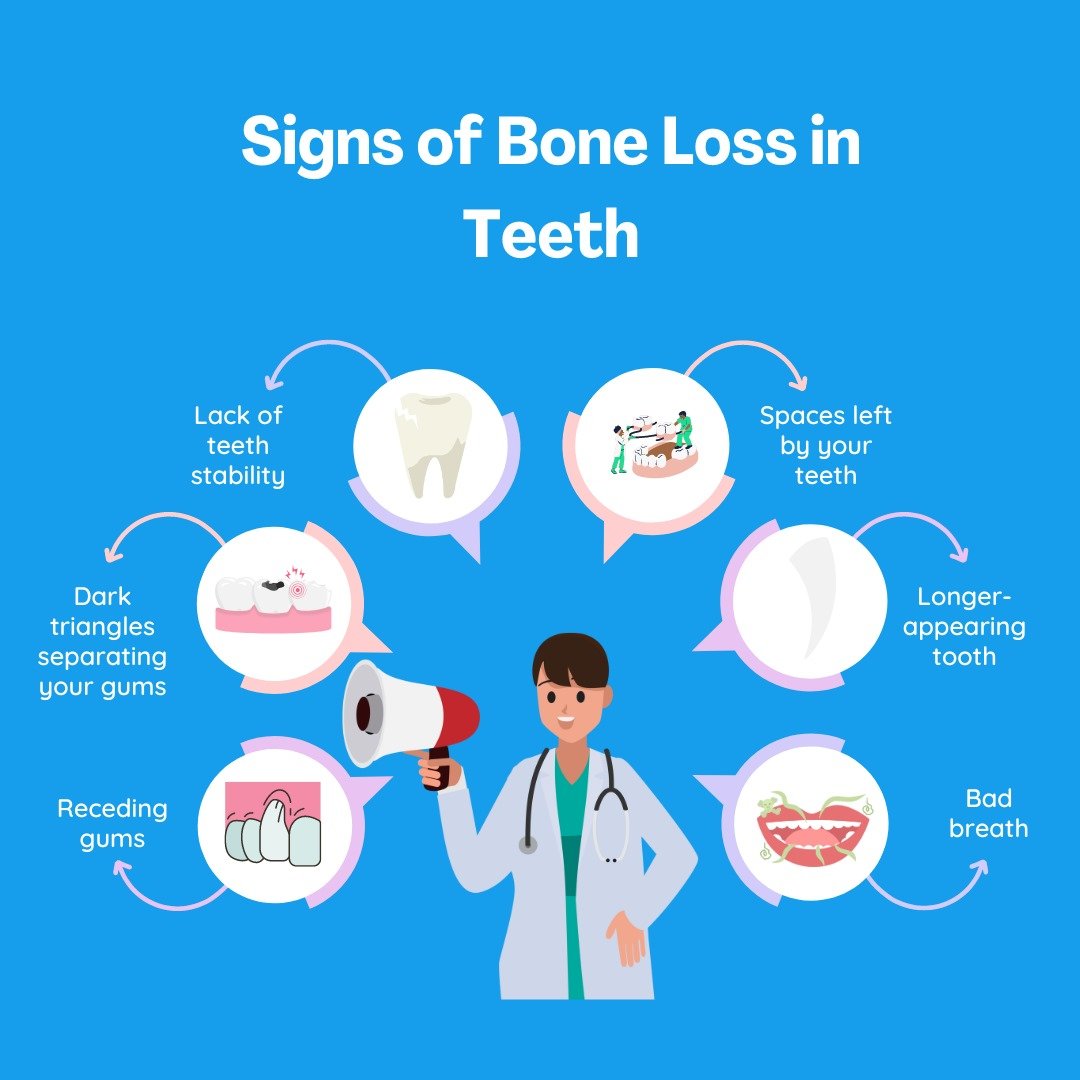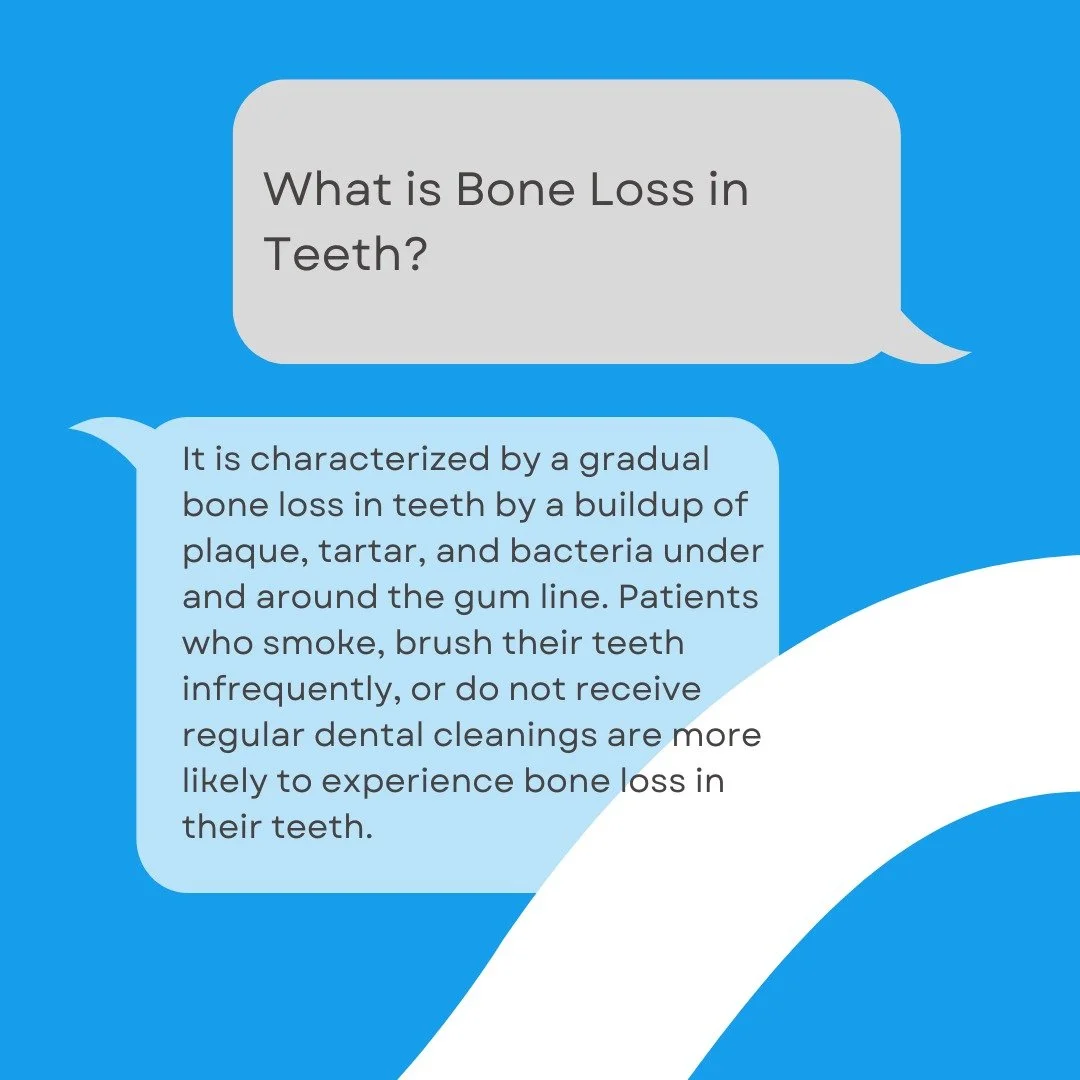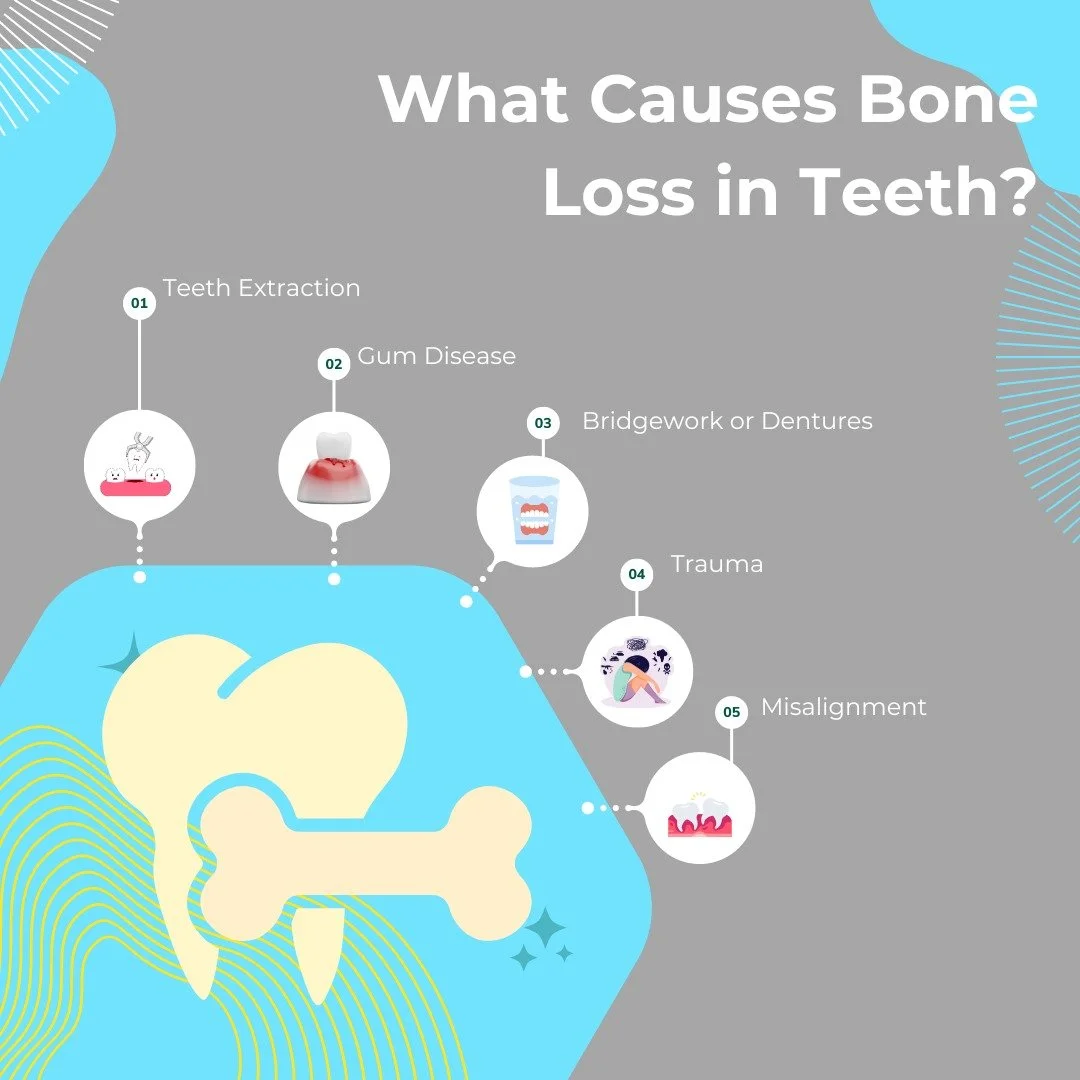Reasons Behind Bone Loss in Teeth With Preventive Tips
What do you think when you see a person with a shrunken face? You may think it is due to the loss of teeth in older people.
However, the real reason behind it can be bone loss in teeth. So, if you were thinking that only tooth loss is due to tooth decay, gum disease, and age, that's not always the case.
Bone loss in teeth can happen in completely fine teeth that have no cavities.
Today, we'll learn how to prevent bone loss in teeth and its causes.
What is Bone Loss in Teeth?
Gum disease, also known as periodontitis, is the most common cause of dental bone loss. It is characterized by a gradual bone loss in teeth by a buildup of plaque, tartar, and bacteria under and around the gum line. Patients who smoke, brush their teeth infrequently, or do not receive regular dental cleanings are more likely to experience bone loss in their teeth.
Infected bacteria destroy bone by seeping out of the tip of the tooth root.
Osteoblasts in our bones get signals from stimulation through our body motions, a process known as osseointegration.
The pressure that is applied to our teeth when we bite, chew, or speak stimulates our jaws.
The stimuli will cause the osteoblasts to continue repairing and strengthening our mandibles.
Nevertheless, the stimulation ends when we lose a natural tooth, leading the body to believe that the teeth-supporting bones are no longer necessary.
To reuse the old bone cells in other areas of our bodies, osteoclasts break down the bones.
6 Signs of Bone Loss in Teeth
Bone loss in teeth occurs gradually and may cause the following symptoms:
There are several indicators that you could be losing tooth bone. You can experience a mix of symptoms, with some being milder and others more severe.
Lack of teeth stability: When you chew, you may feel or move the teeth with your fingers.
Spaces left by your teeth: Teeth are held in place by your bone; if you begin to lose it, your teeth may begin to drift, and gaps may begin to appear.
Dark triangles separating your gums: Generally speaking, the gums will recede if there is less bone between your teeth. It has the appearance of a black triangle.
Longer-appearing tooth: Teeth that seem longer are the result of more exposed tooth structure due to bone loss in teeth.
Receding gums: Because soft tissue grows after hard tissue, your gums will recede if you lose bone.
Bad breath: Periodontitis is the most prevalent cause of bone loss around teeth. This is because the disease-causing bacteria release a large amount of volatile sulphurs, which results in foul breath. An indication of gum disease is red, puffy gums.
What Causes Bone Loss in Teeth?
In the aforementioned section, we have briefly discussed the cause of bone loss in teeth.
Now, let's look at them in detail:
1.Teeth Extraction
Natural teeth facilitate the formation of bone by biting and chewing, among other actions.
When a tooth is taken out but not replaced, the affected area of the jawbone is not stimulated as much and begins to degenerate and resorb.
This can cause bone loss in teeth.
2.Gum Disease
Severe gum infections, such as periodontitis or gingivitis, erode the bone structure supporting your teeth and injure soft tissue.
The most prevalent type of tooth decay and the primary cause of gingivitis is dental plaque.
Gingivitis can develop into more severe gum illnesses, such as periodontitis if not treated.
In this case, the gum and bone supporting the teeth begin to weaken. The gradual deterioration of bone may cause surrounding teeth to become loose and fall out after some time.
3.Bridgework or Dentures
Loose dentures that are positioned above the gum line rely on the bone structure. This can be a cause of bone loss in teeth.
This lack of stimulation over time may lead to bone resorption and degradation, which can make it more difficult for users to talk and eat normally.
If treatment is not received, bone loss may progress to the point where dentures need to be replaced because they can no longer be kept in place with stronger adhesives.
Adjacent teeth used as support for bridge-supported dentures may offer enough stimulation to keep the bone in place.
But the part of the bridge that fills in the space left by the missing teeth won't get any stimulation at all, which leads to bone loss in teeth.
Sometimes, the dentist has to file down nearby teeth to connect dental appliances to bridgework.
4.Trauma
Jawbone loss may happen if a tooth is knocked out or injured.
Sports-related injuries are typically the cause of common trauma types, such as knocked out, chipped, cracked, or fractured jaw bones.
5.Misalignment
When teeth are out of alignment, and there is no longer an opposing tooth structure, bone loss in teeth may occur.
Misalignment problems include TMJ, wisdom teeth eruption, neglected dental care, and general wear and tear.
How to Prevent Bone Loss in Teeth
Here are the simple tips on how to prevent bone loss in teeth:
1.Suitable Dental Care
Maintaining proper dental hygiene is the best strategy to treat periodontitis because it gets rid of the bacteria that are causing immune system cells to break down alveolar bone.
For good hygiene:
Use a gentle, small-headed brush twice daily for two minutes to clean your teeth.
Use dental floss, interdental brushes, or a single-tufted toothbrush to gently clean the interdental gaps every day.
Brush your teeth with fluoride toothpaste. Since toothpaste contains fluoride, this helps to prevent cavities, avoid washing your mouth after brushing.
Other Things For Reversing Bone Loss in Teeth Naturally
There are several ways on how to slow bone loss in teeth:
Quit Smoking: Tobacco use and smoking hurt bone health. You can improve your general health and gums by cutting back on or, ideally, quitting smoking.
Dietary Choices: A nutritious diet high in vitamins, including calcium, vitamin D, protein, and phosphorus, will help you keep your bones strong. Periodontal disease may arise as a result of diets deficient in specific vitamins and minerals or from vitamin shortages.
Cut Back on Sugary Drinks and Snacks: Bateria has plenty of sugar and loves it. A sugary diet increases the amount of bad bacteria in the mouth. Cutting back on your daily sugar intake and frequency of consumption can improve your oral health significantly.
Manage Blood Sugar: Uncontrolled diabetes is one of the main causes of gum disease. Blood sugar control can prevent bone loss in teeth and gum disease.
At-Home Care: Plaque continues to develop every day. Therefore, you should still see your dentist at least every six months. If you are unable to stop the formation of tartar within the allotted six months, you may require more dental visits.
Instead of the typical six months, patients with substantial bone loss in teeth must show up for dental cleanings every three to four months. Periodontal maintenance occurs when you visit for cleanings more regularly.
Modifications in Lifestyle: If you play sports and are experiencing bone loss due to trauma, it may be wise to ask your dentist to create a sports mouth guard. These mouthguards shield your teeth, and wearing one allows the guard to absorb the impact of a blow to the face.
Treatments for Bone Loss in Teeth
The following are the common treatments for bone loss in teeth:
Surgical Dental Cleanings: Often known as open-flap debridement, the procedure includes disinfecting the area surrounding teeth. A regular cleaning cannot get as far into gum pockets as this sort of cleaning can. To facilitate access for cleaning, the gums are gently peeled away from the teeth during the operation.
Dental Implants: After a tooth extraction, the socket changes, and the volume and density of the bone disappear. This is because the shape and density of the jaw bone are maintained by the continuous stimulation that comes from chewing pressures.
Using implants at the site of tooth extraction to replace missing teeth can preserve the bone.
Socket Preservation: It involves promptly grafting bone into the socket. After suturing the area, our body produces thick, healthy bone to fill in the empty socket.
FAQs
What solutions are there for treating bone loss in teeth?
The severity of the issue determines how best to treat tooth loss caused by bone loss. To replace lost teeth and rebuild bone support, options may include bone grafting, guided tissue regeneration, antimicrobial treatment, scaling and root planing, periodontal surgery, and dental implants.
Is it possible to stop teeth from losing bone?
A balanced diet, frequent dental checkups and cleanings, abstaining from tobacco usage, treating systemic health issues, treating gum disease risk factors early on, and practising excellent oral hygiene can all help prevent bone loss in teeth.
Does tooth loss impact one's general health?
Researchers associate gum disease and a number of systemic illnesses, such as diabetes, heart disease, pneumonia, and unfavorable pregnancy outcomes. For general health and wellbeing, gum disease and tooth loss must be properly managed.
In Conclusion
That is all you need to know about bone loss in teeth. By preventing the causes, you can protect yourself from losing your bone.
Daily brushing and flossing may easily prevent plaque, but if you don't work to remove it, it can harden into tartar, which is a tough, porous material.
It may happen above or below the gum line, irritating the gums and resulting in inflammation, redness, swelling, and bleeding.
Remember, bone loss in teeth can change your life by impacting your appearance, speech, and the way you eat.
Therefore, it is always better to visit a professional if you face any dental issues.



